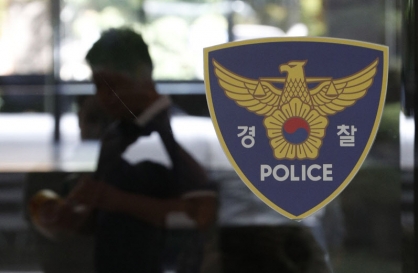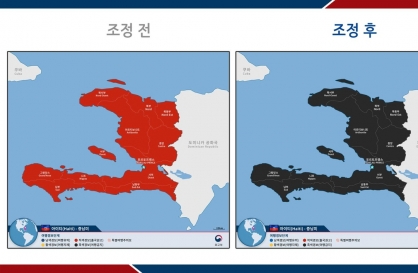2_US Coast Guard seeks to improve safety of submersibles
By Edwin ChoiPublished : June 27, 2023 - 10:42
As an international group of agencies investigates why the Titan submersible imploded while carrying five people to the Titanic wreckage, US maritime officials say they'll issue a report aimed at improving the safety of submersibles worldwide.
Investigators from the US, Canada, France and the United Kingdom are working closely together on the probe of the June 18 accident, which happened in an "unforgiving and difficult-to-access region" of the North Atlantic, said US Coast Guard Rear Adm. John Mauger, of the Coast Guard First District.
Salvage operations from the seafloor are ongoing, and the accident site has been mapped, Coast Guard chief investigator Capt. Jason Neubauer said Sunday. He did not give a timeline for the investigation. Neubauer said the final report will be issued to the International Maritime Organization.
"My primary goal is to prevent a similar occurrence by making the necessary recommendations to advance the safety of the maritime domain worldwide," Neubauer said.
Evidence is being collected in the port of St. John's, Newfoundland, Canada, in coordination with Canadian authorities.
All five people on board the Titan were killed. Debris from the vessel was located about 3,810 meters underwater and roughly 488 meters from the Titanic on the ocean floor, the Coast Guard said last week.
One of the experts whom the Coast Guard has been consulting said Monday that he doesn't believe there is any more evidence to find.
"It is my professional opinion that all the debris is located in a very small area and that all debris has been found," said Carl Hartsfield, a retired Navy captain and submarine officer who now directs a lab at the Woods Hole Oceanographic Institution that designs and operates autonomous underwater vehicles.
The search is taking place in a complex ocean environment where the Gulf Stream meets the Labrador Current, an area where challenging and hard-to-predict ocean currents can make controlling an underwater vehicle more difficult, said Donald Murphy, an oceanographer who served as chief scientist of the Coast Guard's International Ice Patrol.
Hartsfield, however, said based on the data he's reviewed and the performance of the remote vehicles so far, he doesn't expect currents to be a problem. Also working in the searchers' favor, he said, is that the debris is located in a compact area and the ocean bottom where they are searching is smooth and not near any of the Titanic debris.
Authorities are still trying to sort out what agency or agencies are responsible for determining the cause of the tragedy , which happened in international waters.
OceanGate Expeditions, the company that owned and operated the Titan, is based in the US but the submersible was registered in the Bahamas. Meanwhile, the Titan's mother ship, the Polar Prince, was from Canada, and those killed were from England, Pakistan, France, and the US
A key part of any investigation is likely to be the Titan itself. The vessel was not registered either with the US or with international agencies that regulate safety. And it wasn't classified by a maritime industry group that sets standards on matters such as hull construction.
The investigation is also complicated by the fact that the world of deep-sea exploration is not well-regulated. OceanGate CEO Stockton Rush, who was piloting the Titan when it imploded, had complained that regulations can stifle progress.
Will Kohnen, chairman of the manned undersea vehicles committee of the Marine Technology Society, said Monday that he is hopeful the investigation will spur reforms. He noted that many Coast Guards, including in the United States, have regulations for tourist submersibles but none cover the depths the Titan was aiming to reach. The International Maritime Organization, the UN's maritime agency, has similar rules for tourist submersibles in international waters. The Marine Technology Society is an international group of ocean engineers, technologists, policy makers, and educators.
"It's just a matter of sitting everyone at the table and hashing it out," Kohnen said of amending rules to require submersibles to be certified and inspected, provide emergency and plans, and carry life support systems.
If it chooses to do so, the Coast Guard can make recommendations to prosecutors to pursue civil or criminal sanctions in the Titan explosion. Questions about the submersible's safety were raised both by a former company employee and former passengers. Others have asked why the Polar Prince waited several hours after the vessel lost communications to contact rescue officials.
The Titan launched at 8 a.m. June 18 and was reported overdue that afternoon about 700 kilometers south of St. John's. Rescuers rushed ships, planes and other equipment to the area. Any sliver of hope that remained for finding the crew alive was wiped away early Thursday, when the Coast Guard announced debris had been found near the Titanic.
Killed in the implosion were Rush; two members of a prominent Pakistani family, Shahzada Dawood and his son Suleman Dawood; British adventurer Hamish Harding; and Titanic expert Paul-Henri Nargeolet. (AP)

cap: US Coast Guard officials Capt. Jason Neubauer (right), chief investigator, and Rear Adm. John Mauger, commander of the First Coast Guard District, briefs the media at Coast Guard Base in Boston, Sunday. AP-Yonhap






![[News Focus] Lee tells Yoon that he has governed without political dialogue](http://res.heraldm.com/phpwas/restmb_idxmake.php?idx=644&simg=/content/image/2024/04/29/20240429050696_0.jpg&u=20240429210658)











